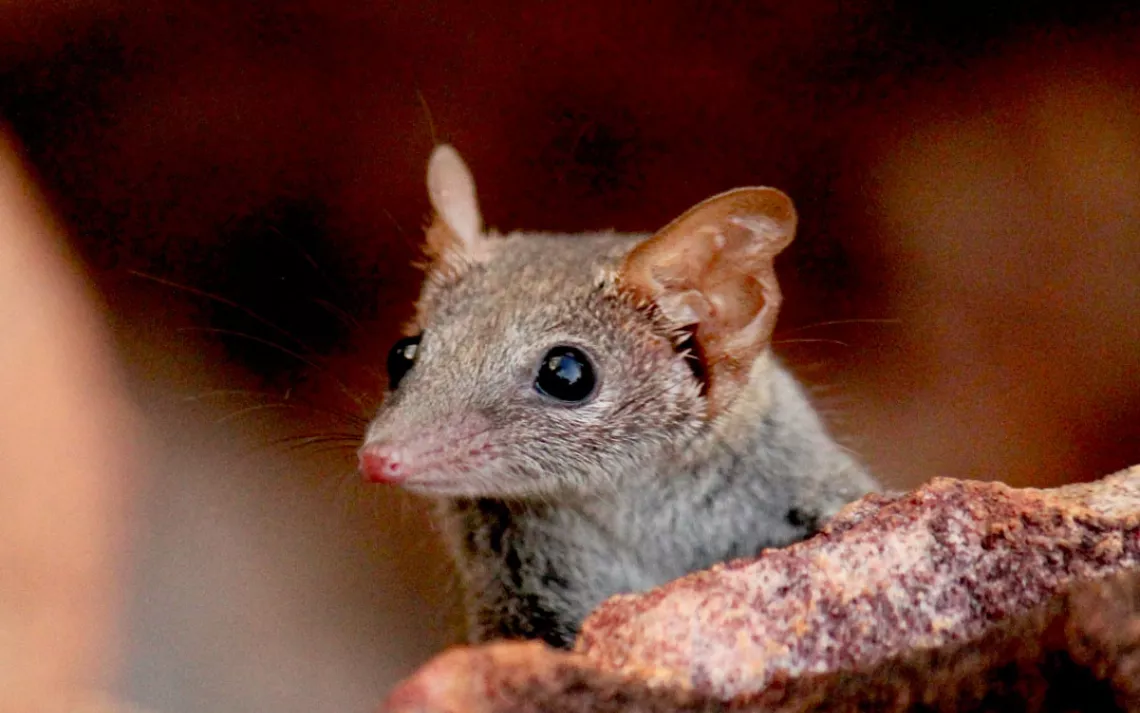The World’s Fiercest—and Smallest—Marsupial
The rare Ningbing is a cross between a mouse and a Tasmanian devil

Photo by Joey Clarke/Australian Wildlife Conservancy
What at first glance might look like a typical house mouse is actually a native Australian carnivorous marsupial with a name you won’t want to stop saying. Although it may look adorable, the Ningbing is a ferocious predator, emerging after dark to hunt and devour large insects and other invertebrates. It is a relative of the well-known Tasmanian devil.
The Ningbing (Pseudantechinus ningbing) was named for the Ningbing Station, where it was first collected in western Australia’s sparsely settled northern region. It was initially thought to be a form of the fat-tailed Pseudantechinus, and wasn’t described as a separate species until 1988. A rare creature, the Ningbing is only found across the Kimberley region of Australia and is quite difficult to spot. “A dedicated person may find one at night while visiting AWCs Mornington Wildlife Sanctuary,” says Australian Wildlife Conservancy (AWC) chief executive Atticus Fleming.
Males measure nine to 10 centimeters in body length, while females are generally a centimeter smaller. Their fat tails are slightly shorter than their body. Adults weigh between 15 and 25 grams, about the weight of your average toothbrush. They are light-grayish-brown over their entire body, with relatively large round ears and snouts that are quite pointed.
The Ningbing’s habits in the wild are somewhat of a mystery. Fleming explained that they live in “predominantly rocky country, escarpments, gorges, hills, and outcrops.” They are thought to breed in June and give birth in late July, and they have been known to den in termite mounds.
While little is known about the Ningbing’s behavior, we do know that small mammals of northern Australia have suffered catastrophic declines in recent decades. The Ningbing is not yet listed as threatened because more information is required about its status. But, says Fleming, it is known to be “ particularly vulnerable to feral cats and the effect of massive wildfires, some of which burn over 1 million acres unchecked,” says Fleming.
Fleming explained that the AWC is protecting populations of Ningbing in three wildlife sanctuaries by delivering the largest fire management program in the country (to reduce wildfires) and by implementing landscape-scale feral animal control. Fewer cats and fewer fires would give this ferocious marsupial predator a fighting chance.
 The Magazine of The Sierra Club
The Magazine of The Sierra Club



